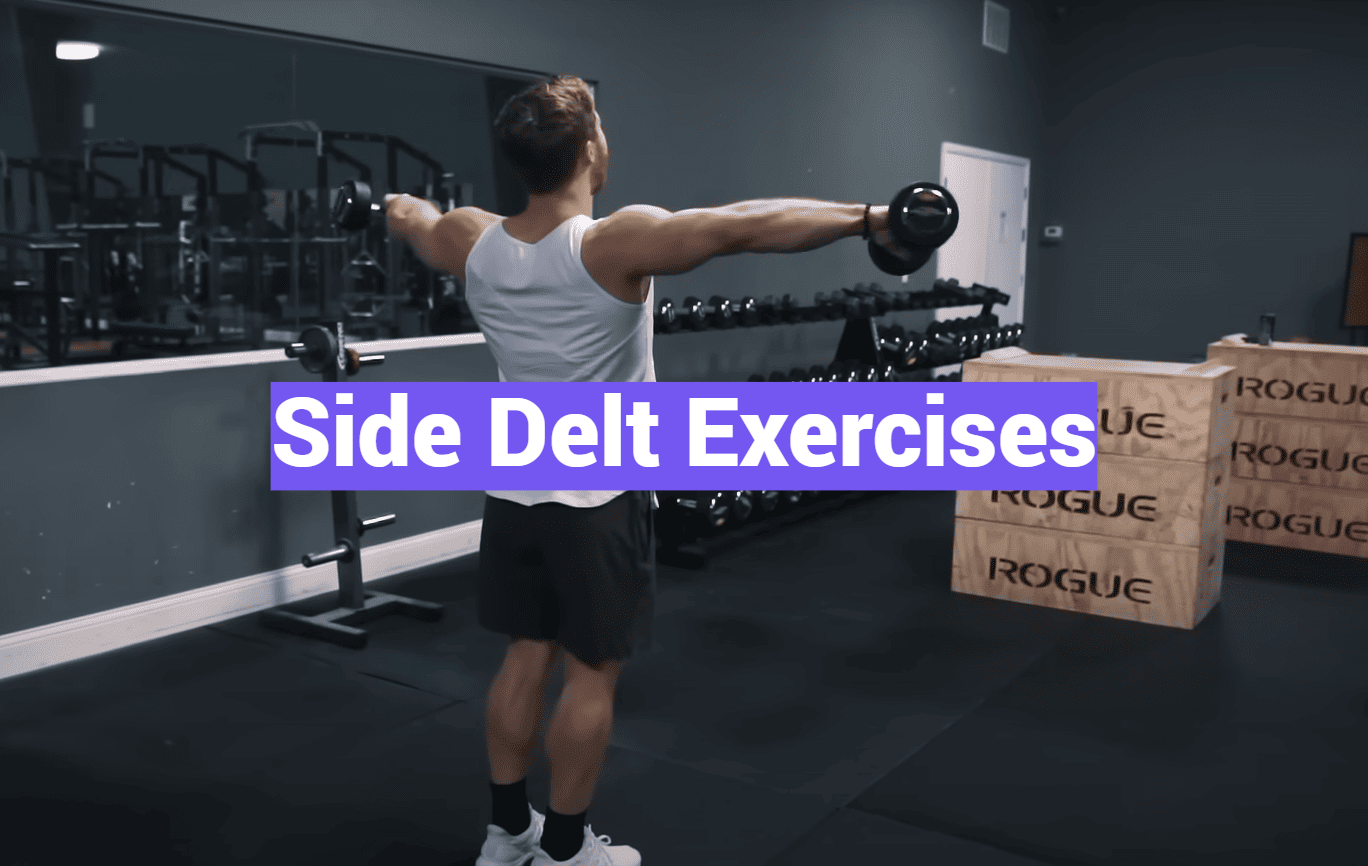Did you know your shoulder muscles contribute to nearly 60% of your upper body’s visual width? Yet most gym-goers focus only on the front and rear portions, leaving their lateral development lagging. This oversight keeps many from achieving that powerful, tapered look that turns heads.
The lateral deltoid acts as your body’s natural shoulder pad. When properly trained, it creates the illusion of broader shoulders and a narrower waist. But growing this area requires more than just lifting weights overhead. Common errors like improper elbow positioning and excessive momentum sabotage progress.
Our guide cuts through the noise. You’ll learn how to activate these muscles effectively using science-backed methods. We’ll break down movement mechanics and share strategies to avoid plateaus. Whether you’re lifting at home or in a commercial gym, these principles apply.
You’ll also discover how top athletes structure their workouts for balanced growth. From tempo variations to rep ranges, we cover the details most trainers overlook. Let’s reshape your physique starting with the foundation of every impressive upper body.
Key Takeaways
- Lateral deltoids define shoulder width and create a V-shaped torso
- Proper form prevents injuries and ensures muscle activation
- Compound and isolation movements work best when combined
- Training frequency impacts growth more than sheer weight lifted
- Progressive overload remains crucial for continuous development
Introduction to Side Delt Exercises
The secret to a V-shaped torso lies in a muscle most gym routines neglect. Your lateral deltoid acts like nature’s shoulder pad, lifting arms sideways to create that broad, athletic frame. “Trainers call these the ‘show muscles’ for good reason,” notes physique coach Mark Bell. “They transform how clothes fit and how you carry yourself.”
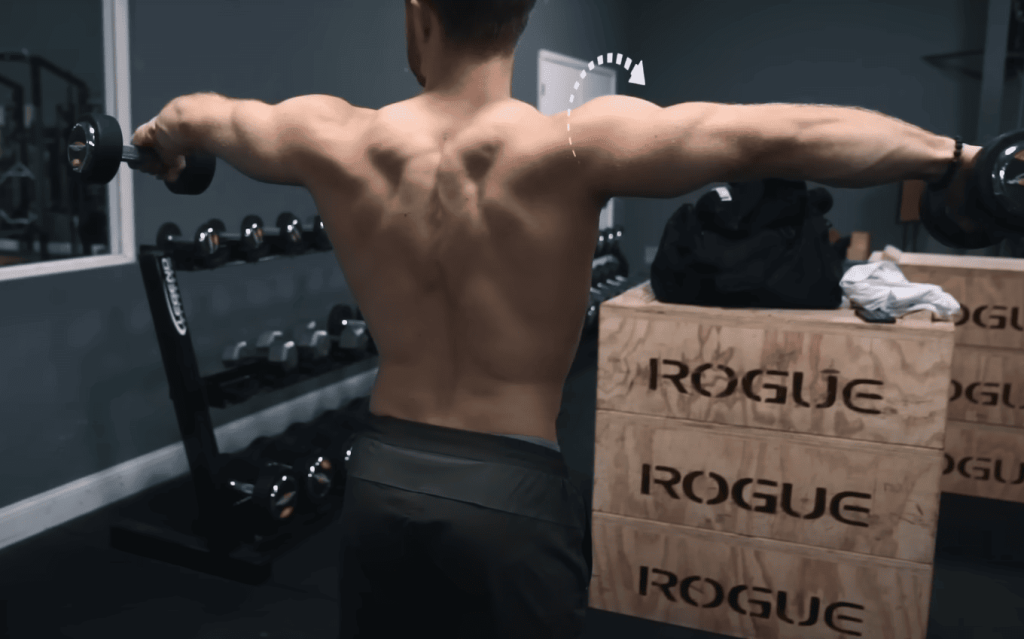
This muscle group handles shoulder abduction – think raising your arm to hail a cab. While front delts get attention from bench presses, the lateral portion often lags. Studies show they require 30% more focused work to match development in other shoulder regions.
Three factors make this area stubborn:
- Limited engagement during compound lifts
- Smaller muscle fiber recruitment range
- Common form errors like swinging weights
Smart training beats brute force. Use controlled motions and moderate weights – heavy loads often shift work to trapezius muscles. Aim for 10-15 reps per set, focusing on the squeeze at peak contraction. Pair this with progressive overload, adding 5% weight weekly while maintaining perfect form.
“The lateral raise isn’t about elevation – it’s about creating tension through the entire movement arc.”
Your roadmap starts here. Master these fundamentals before diving into advanced techniques. Remember, consistency trumps intensity when shaping these crucial muscles.
Understanding Shoulder Anatomy and the Role of Deltoids
What if your shoulder gains are limited by misunderstanding these three crucial muscles? Your shoulders function like a biological teamwork project, with each deltoid head playing distinct roles in movement and physique development.
Three Muscle Groups, One Powerful Joint
The front deltoid drives your arm forward during pushes like bench presses. At the back, the rear delt pulls your arm backward while stabilizing posture. Between them lies the lateral portion – your shoulder’s natural spotlight muscle.
Here’s why this matters:
- Anterior fibers thrive on vertical pressing movements
- Posterior fibers activate during rowing motions
- Lateral fibers demand precise sideways lifting patterns
Architecture of an Impressive Frame
The lateral deltoid’s fan-like fiber arrangement allows stronger contractions at specific angles. This multipennate structure explains why lighter weights with controlled lifts often spark better growth than heavy loads.
“Unlike other shoulder muscles, the lateral head generates force across multiple directions – that’s your golden ticket to width.”
When developed evenly, all three muscles create shoulders that pop from every angle. But neglect any head, and your physique becomes a lopsided story of missed potential. Smart training starts with knowing which moves challenge each section.
The Importance of Lateral Deltoids for Upper Body Aesthetics
Ever wonder why some physiques instantly command attention? The answer lies in a muscle group that frames your entire upper body like architectural pillars. Your lateral deltoids act as natural shoulder extenders, creating width that transforms how clothes fit and how others perceive your strength.
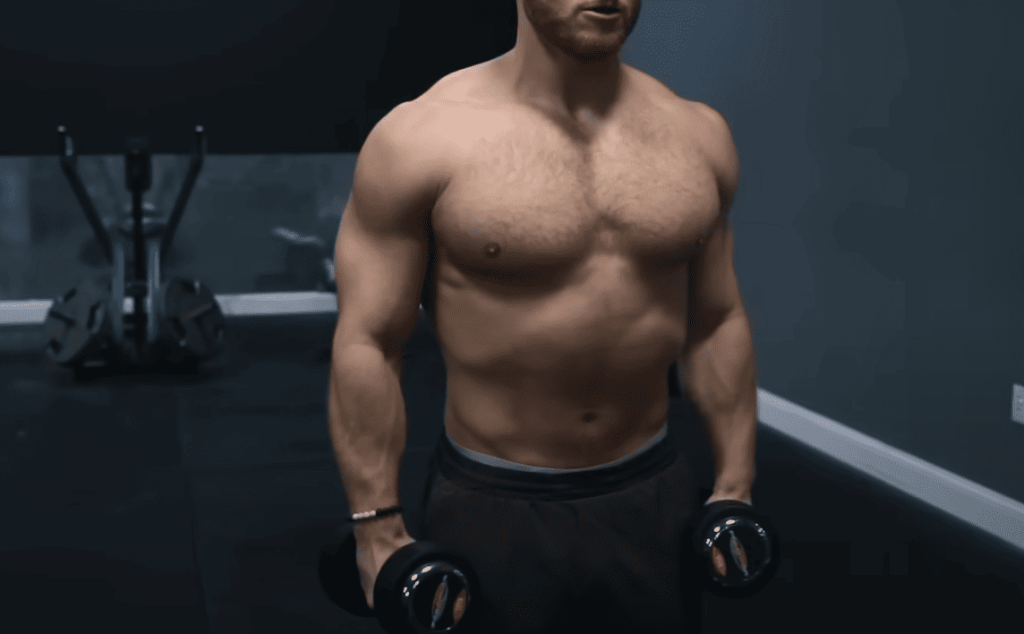
Achieving a Tapered V Silhouette
Think of these muscles as your body’s blueprint for proportionality. When developed, they draw the eye upward, making your waist appear narrower by comparison. This optical trick – often called the “hourglass effect” – turns average builds into head-turning frames.
“The lateral deltoid isn’t just a muscle – it’s the cornerstone of athletic aesthetics,” says IFBB Pro Coach Rachel Daniels. “It’s what separates good physiques from gallery-worthy ones.”
Beyond looks, strong lateral delts improve daily function. They stabilize shoulder joints during lifts and combat the slouched posture caused by desk work. Check how shoulder development impacts your frame:
| Feature | Underdeveloped Shoulders | Trained Lateral Delts |
|---|---|---|
| Waist Appearance | Boxy, undefined | Narrower, tapered |
| Posture | Rounded shoulders | Upright, open chest |
| Visual Impact | Average proportions | Dramatic V-shape |
Notice how the right column reflects benefits beyond the gym? That’s the power of targeted training. Your shoulders become functional art – enhancing confidence whether you’re lifting weights or lifting groceries.
Top Side Delt Exercises Listicle Overview
Picture a sculptor chiseling marble – your workout routine needs that same precision to carve shoulder width. These four scientifically proven movements activate the often-neglected lateral fibers through their full range of motion.
Why these selections work:
- Lateral raises: Gold standard for isolation
- Full-range variations: Boost time under tension
- Arnold presses: Combine rotation for 3D development
- Abduction rows: Heavy-load option for strength gains
“The best shoulder workouts balance heavy pushes with controlled lateral activation – that’s how you build functional width,” notes kinesiologist Dr. Ellen Torres.
Compare key features across these muscle-shaping techniques:
| Movement | Equipment | Primary Benefit |
|---|---|---|
| Standing Lateral Lift | Dumbbells | Peak contraction focus |
| Arc-Range Variation | Cables | Constant tension |
| Rotational Press | Adjustable Bench | Multi-plane activation |
| Weighted Row Variation | Barbell | Strength progression |
Beginners should start with lighter weights – think 5-8 lbs dumbbells. Focus on lifting to shoulder height while keeping elbows slightly bent. Advanced lifters can combine tempo changes with drop sets for brutal efficiency.
Equipment flexibility makes these movements gym-proof. No weights? Use water bottles or resistance bands. The key lies in controlled motion, not load size. Pair these with proper nutrition, and watch your silhouette transform within 8-12 weeks.
Essential Side Delt Exercises: Mastering Lateral Raises
Your shoulders become instant width-makers when you unlock this fundamental movement. The lateral raise transforms your frame through targeted tension rather than heavy loads. “Think of it as shoulder origami – precise folds create dramatic shape,” explains trainer Layne Norton.
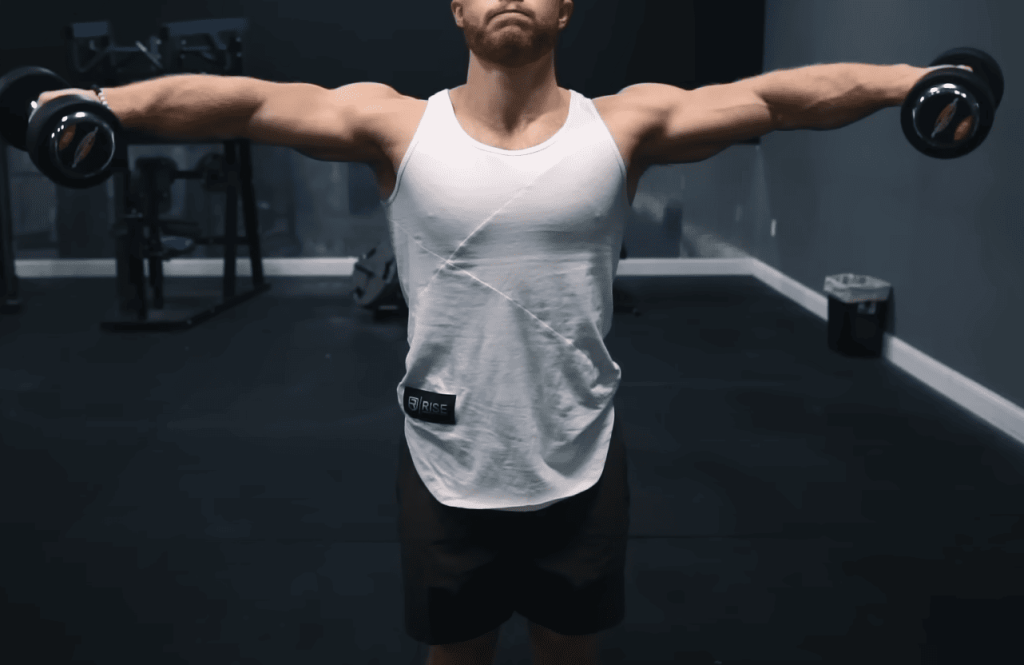
Correct Form and Range of Motion
Start with palms facing your thighs, elbows slightly bent. Lift outward until arms reach shoulder height – no higher. This 90-degree arc keeps tension on the muscle without straining joints.
Key checkpoints:
- Maintain neutral wrists throughout
- Exhale during the lifting phase
- 3-second descent for maximum control
“The magic happens when you imagine pouring water from your elbows – it keeps the movement honest.”
Equipment Variations That Deliver Results
Cables offer resistance through the entire motion, while dumbbells allow natural rotation. Compare their benefits:
| Tool | Advantage | Best For |
|---|---|---|
| Dumbbells | Free movement patterns | Beginners |
| Cables | Constant tension | Advanced lifters |
Start with 3 sets of 12-15 reps using 5-10 lb weights. Focus on smooth transitions rather than speed. Your shoulders will thank you later.
Full-Range Lateral Raise Techniques
Transform your shoulder training with a movement that rewrites the rules of muscle engagement. The full-range lateral raise turns basic lifts into sculpting tools through extended motion arcs and strategic grip adjustments.
Grip and Posture Tips
Hold dumbbells with your palms facing forward – a reverse grip that reshapes muscle activation. This position aligns shoulder joints to reduce strain while increasing lateral fiber recruitment.
Stand tall with feet hip-width apart. Keep your arms straight but not locked throughout the movement. Engage your core like you’re bracing for a gentle punch to maintain spinal alignment.
“This variation isn’t about weight – it’s about creating a dialogue between stretch and contraction,” explains trainer Alicia Fox.
Begin in the classic starting position with weights at your sides. Lift outward and upward in a wide arc, imagining you’re drawing half-circles with each rep. Stop when your thumbs nearly touch overhead.
Three key benefits emerge:
- Enhanced muscle fiber recruitment through 180° motion
- Simultaneous stretch and tension for growth stimulation
- Improved shoulder mobility from expanded range
Use 40-50% less weight than standard lateral raises. The extended movement pattern increases difficulty – 5 lb dumbbells often challenge seasoned lifters. Perform 3 sets of 10-12 reps, focusing on smooth transitions between positions.
Dumbbell Variations for Targeting Side Delts
Free weights become shoulder architects when used strategically. Adjusting your grip and lifting angle transforms basic lifts into precision tools for lateral development. “Dumbbells let you sculpt shoulders like clay – every tweak changes the final shape,” notes strength coach Tony Gentilcore.
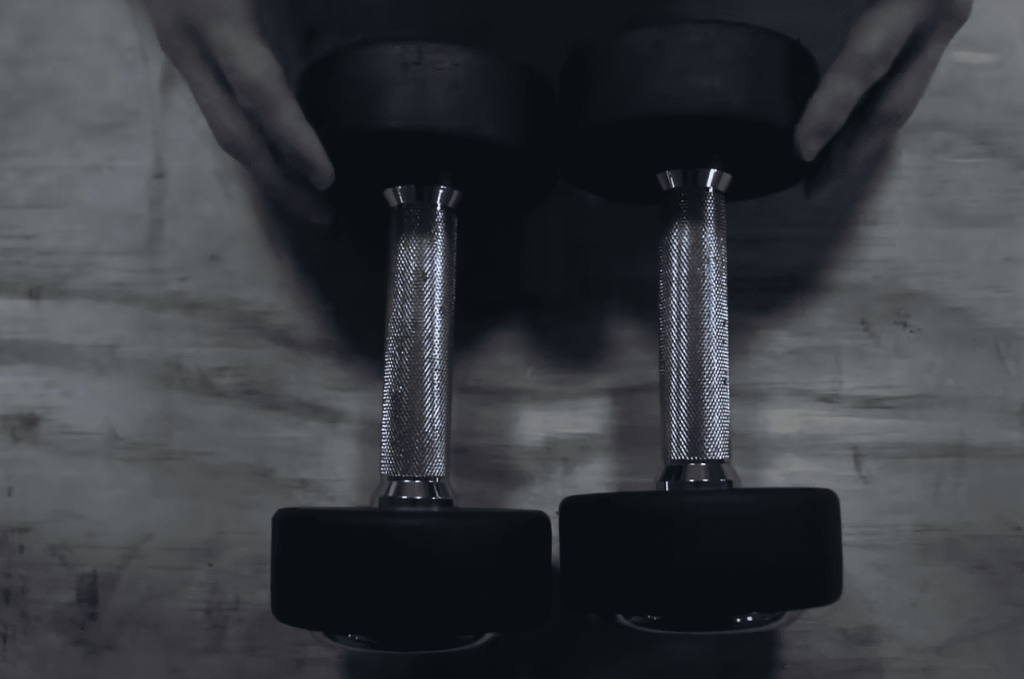
Three grip styles shift muscle activation:
| Grip Type | Muscle Focus | Recommended Use |
|---|---|---|
| Neutral (palms-in) | Even fiber recruitment | Beginners |
| Overhand | Upper lateral stress | Peak contraction work |
| Underhand | Lower fiber engagement | Full-range motions |
Rotational moves like the Arnold press add 3D stimulation. Lifters can start seated for stability or stand to engage core muscles. Single-arm variations expose strength gaps – if one arm shakes first, you’ve found your weak link.
Light weights (5-15 lbs) often deliver better results than heavy loads. Try this progression:
- Week 1: Standard lateral raises (3×12)
- Week 3: Around-the-world arcs (3×10)
- Week 5: Drop sets with mixed grips
“Your shoulders grow when tension meets variety – dumbbells offer both in spades.”
Advanced lifters layer techniques like paused reps or partial ranges. Remember: control beats momentum every time. You’ll see collar bones widen before your eyes when these methods click.
Cable and Band Workouts for Lateral Deltoids
Forge shoulder width using resistance tools that never let up. Unlike traditional weights, cables and bands maintain tension through every inch of movement. This constant load sparks growth in stubborn areas that often escape stimulation.
Harnessing Resistance Physics
Cable machines eliminate momentum cheating. The pulley system forces your lateral deltoids to work harder during both lifting and lowering phases. Adjust your position relative to the machine to target different fiber angles – stepping back increases resistance at peak contraction.
“Bands and cables teach your muscles to stay engaged – no rest between reps, no escape from the burn.”
Portable bands offer similar benefits anywhere. Their elastic resistance grows stronger as you stretch them, matching your strength curve. Try these variations:
| Feature | Cable Workouts | Band Workouts |
|---|---|---|
| Tension Type | Consistent pull | Progressive resistance |
| Angle Adjustment | Multiple heights | Grip modifications |
| Portability | Gym-based | Travel-friendly |
Crossbody lateral raises shine for targeting hard-to-reach fibers. Pull diagonally across your torso, maintaining controlled motion. This approach reduces joint strain while maximizing time under tension – perfect for high-rep finishers.
Beginners should start with 2-3 sets of 15-20 reps using light resistance. Focus on smooth transitions rather than speed. Your shoulders will reveal new definition within weeks when paired with proper nutrition.
Seated Arnold Press for Effective Shoulder Activation
What separates good shoulder workouts from truly transformative ones? The answer lies in a movement that merges strength training with rotational precision. The Arnold Press – named after its legendary creator – challenges your upper body through three-dimensional motion patterns most lifts ignore.
This seated variation starts with dumbbells at chin level, palms facing your chest. As you press upward, rotate your hands until palms face forward at the top position. The controlled spin engages your deltoids through their full range while stabilizing smaller rotator cuff muscles.
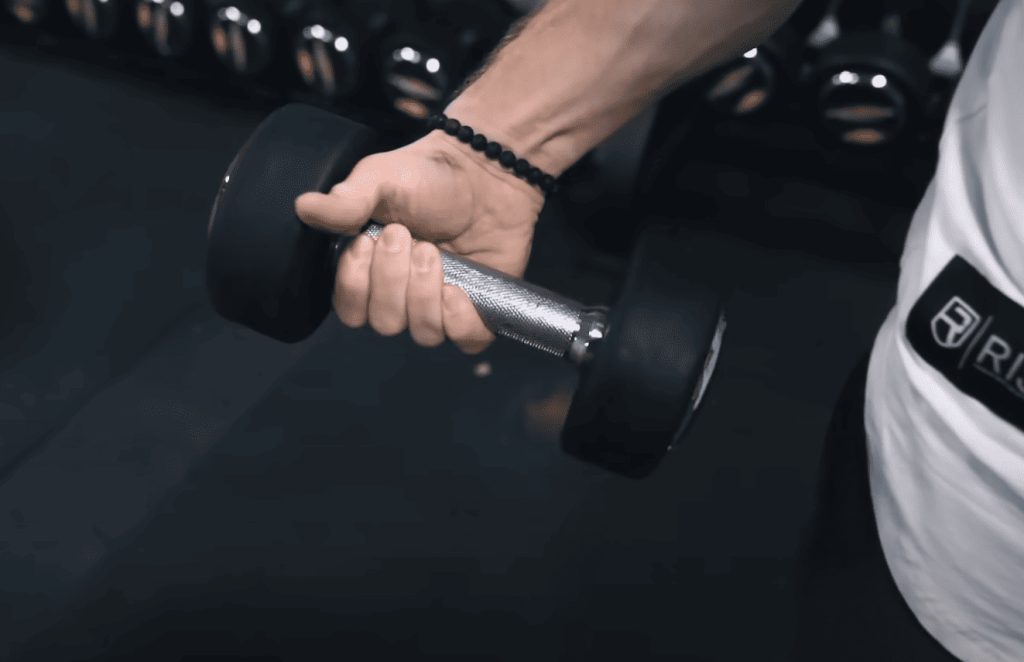
Why This Beats Standard Shoulder Presses
Traditional overhead movements work in a single plane. The Arnold version adds rotational resistance that fires up dormant muscle fibers. Your shoulders get continuous tension from start to finish – no momentum cheating allowed.
“This press doesn’t just build size – it engineers shoulder joints that move like well-oiled machinery.”
Key advantages emerge when comparing techniques:
| Feature | Traditional Press | Arnold Press |
|---|---|---|
| Movement Planes | Vertical only | Multi-directional |
| Muscle Activation | Front-focused | Full deltoid engagement |
| Equipment Needs | Barbell/dumbbells | Adjustable bench + dumbbells |
Beginners should start light – 10-15 lb dumbbells let you master the rotation pattern. Advanced lifters can superset these with lateral raises for brutal efficiency. Your shoulders will reveal new definition within weeks when paired with controlled tempo training.
The Abduction Row: Heavyweight Movement for Side Delts
Ever hit a plateau with your shoulder gains despite consistent training? This compound movement lets you challenge your upper body with heavier weights while maintaining strict form. Unlike traditional lifts, it merges horizontal pulling with rotational mechanics for 360° muscle engagement.
Proper Technique for Maximum Fiber Recruitment
Start facing away from the cable machine, gripping the handle with a neutral wrist. Pull the weight upward diagonally while rotating your arm outward – knuckles should point sideways at peak contraction. Keep elbows slightly below shoulder height to maintain tension on the lateral deltoids.
Beginners can manage 20-40 lbs using controlled 3-second lifts. Advanced lifters benefit from partial reps after failure. This dual-action movement builds strength while carving definition, making it a cornerstone for balanced shoulder development.

